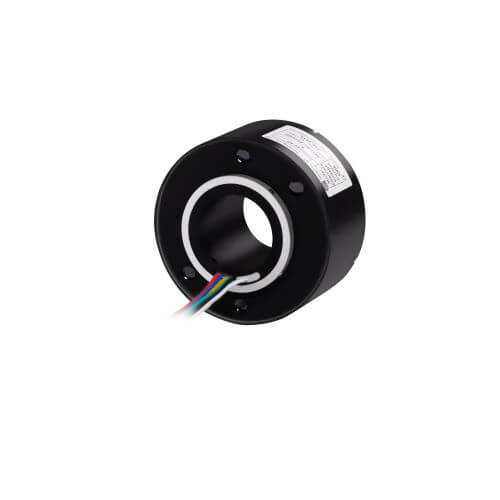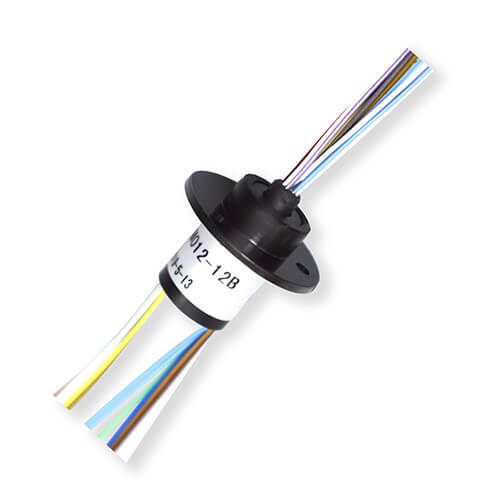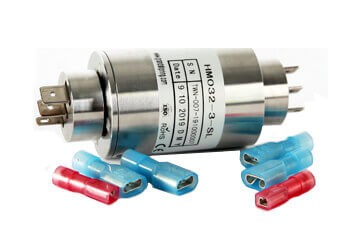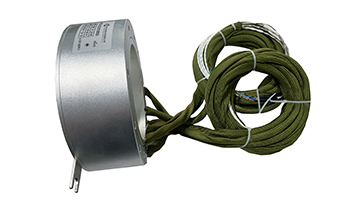In an era where technology and innovation surround us, it becomes increasingly important to comprehend the basic principles that govern the devices and appliances we use daily. Among the various components found in electrical machines, slip rings and commutators stand out as two fundamental elements that contribute significantly to their efficient operation. Though they may appear similar at first glance, understanding their core differences is crucial for anyone seeking deeper knowledge in the field of electrical engineering.
Explanation of the Fundamental Purposes of Both the Slip Ring and the Commutator
Slip rings and commutators serve distinct yet essential purposes within electrical systems. The primary purpose of a slip ring is to provide a continuous electrical connection between stationary and rotating parts of a system. This seamless transmission of electrical signals and power enables machines with rotating parts, like wind turbines and electrical motors, to operate effectively without disruption.
Conversely, commutators function as rotary electrical switches that periodically reverse the flow of current between the rotor and an external circuit. Typically found in electrical motors and generators, commutators facilitate the conversion of internally generated alternating current (AC) into direct current (DC) before it reaches the external circuit. This conversion is crucial for devices that rely on a constant voltage or current, such as DC motors.
Brief Overview of the Importance of Understanding the Differences Between These Two Components in Electrical Machines
A clear and coherent understanding of the differences between slip rings and commutators paves the way for more effective design, implementation, and maintenance of electrical machines. Engineers and technicians who can accurately identify and select appropriate components for the intended application will enhance system efficiency and longevity while minimizing performance issues and breakdowns.
Furthermore, knowing these distinctions enables those working in the electrical field to diagnose and resolve potential problems with greater accuracy. This in-depth knowledge can also provide a valuable foundation for anyone seeking a career in electrical engineering, enhancing professional competency and fostering a culture of continuous learning and improvement.
In conclusion, the context of understanding slip rings and commutator differences goes beyond mere academic interest; it has practical implications that support robust, safe, and functional electrical systems. Hence, shedding light on these critical components not only deepens our appreciation for the engineering behind everyday devices but also empowers us to make informed decisions, ensuring the seamless operation and optimal performance of the machines that power our modern world.
Overview of Slip Rings
Definition of a Slip Ring
Within the world of electrical engineering, a slip ring plays a pivotal role as an electromechanical device that allows the transfer of power and electric signals from a stationary structure to a rotating one. Enabling smooth rotation while maintaining a constant electrical connection, these rings facilitate signal and power continuity, thus underpinning the successful operation of electrical machines with rotational movement.
Types of Slip Rings and Their General Uses
Slip rings are versatile and come in a wide array of types that cater to various applications. Each type exhibits distinct characteristics to accommodate different operating conditions and functional requirements.
Through Bore Slip Rings: These are used in scenarios where a machine requires a shaft to pass through the center of the ring. They are frequently employed in wind turbines and medical equipment such as CT scanners.

Capsule Slip Rings: Compact and easy to install, capsule slip rings find their uses in machinery and equipment where space is a constraint. Examples include CCTV cameras and robotics.

Pancake Slip Rings: These are a specialized type that offers a low profile when axial length is restricted, often applied in communication systems and turntables.

Mercury Slip Rings: These leverage the liquid metal mercury for conducting electrical signals and are used in high-speed applications that demand low resistance and electric noise.

It’s important to note that each type of slip ring has its advantages and specific use cases, and they are chosen based on the requirements of the particular machinery or equipment in question.
Description of How a Slip Ring Works
Construction
The construction of a slip ring is conceptually simple yet functionally sophisticated. It comprises a metal ring that’s integrated into the rotating part of a machine. Attached to this ring are contact brushes that maintain constant contact as the ring rotates, ensuring a steady flow of electricity.
Operations
When the electrical machine spins into motion, the slip ring rotates with it. As the ring rotates, the brushes remain static yet in constant touch with the ring. This setup allows the brushes to pick up or deliver power and signals through the continuous electrical connection created, allowing for data and power transmission to the rotating parts of the machine.
Basic Principles
The basis for a slip ring’s operation is the principle of electrical conductivity. However, the art lies in maintaining this electrical connection during rotation. The use of low-resistance materials for the rings and brushes, combined with their persistent contact, allows consistent conduction of electricity. The slip ring’s whole design is thus targeted at guaranteeing unbroken signal and power transmission amidst machine rotation.
By understanding the specific contexts of a slip ring’s definition, types, uses, and function, professionals can more effectively apply this knowledge in various electrical applications, ensuring successful power and signal transmission within rotating machinery.
Overview of Commutators
Definition of a Commutator
A commutator is a fundamental component of electrical machines, acting as a rotary electrical switch that selectively reverses the direction of current between the rotor (rotating part) and the external circuit. By doing so, commutators effectively convert the internally generated alternating current (AC) within motors and generators into direct current (DC) for the connected external devices.

Types of Commutators and Their General Applications
Commutators can be classified into several types, primarily distinguished by the number of segments and their design configurations. Some common types include:
- Segmented Commutators: Widely used in DC machines like motors and generators, segmented commutators have individual copper segments separated by insulating materials, known as mica. These are connected to coils to facilitate the transfer of current.
- Cylindrical Commutators (Drum Commutators): Often seen in large machines and high-power applications, cylindrical commutators’ radial segments are arranged in a drum-like configuration and wrapped by brushes to ensure the smooth transmission of electrical current.
Each type of commutator is designed to cater to different applications, and selecting the appropriate one depends on the specific requirements of the electrical machine, such as power output, efficiency, and space constraints.
Explanation of How a Commutator Operates
Construction
The construction of a commutator typically involves a series of partially insulated copper segments arranged around a cylinder. These segments are connected to the armature windings within the rotating component. Additionally, stationary brushes maintained in constant contact with the commutator ensure the flow of current between the device and the external circuit.
Operations
As the electrical machine rotates, the commutator also spins along with it. The brushes, though remaining static, maintain contact with the rotating copper segments. When the rotor circuit experiences AC, the commutator reverses the direction of current between the rotor and the brushes at specific intervals. For each half rotation of the armature, this reversal in current ensures that the resulting output at the brushes becomes a unidirectional (DC) waveform, allowing for compatibility with DC machines.
Basic Principles
The central principle governing the operation of a commutator is its ability to reverse the direction of the flow of current between the rotor and the external brushes. This is achieved through the segmented construction and timed switching of contact points as the device rotates. By constantly altering the segments connected to the brushes, the commutator inverts the current at controlled moments, resulting in a DC output to the connected devices.
In conclusion, comprehending the nuances of commutators, their types, applications, and mechanisms offers invaluable insights for anyone involved in the field of electrical engineering. By grasping the functioning and context of this vital component, professionals can ensure the optimized performance, efficiency, and compatibility of electrical machines reliant on direct current.
Comparisons Between Slip Rings and Commutators
Functionality
The primary difference between slip rings and commutators lies in their respective functionalities.
Slip Rings: The purpose of a slip ring is to create a continuous electrical connection between stationary and rotating components. By maintaining this connection, slip rings enable the uninterrupted transmission of electrical signals and power, which is crucial for the operation of machines with rotating parts such as wind turbines, electric motors, and generators.
Commutators: In contrast, a commutator functions as a rotary electrical switch that periodically reverses the direction of current between the rotor and an external circuit. By facilitating the conversion of internally generated alternating current (AC) to direct current (DC), commutators enhance compatibility with electrical devices requiring a constant voltage or current, such as DC motors and generators.
Construction
While both slip rings and commutators consist of conductive materials and share a similar rotating design, their construction differs in several aspects.
Slip Rings: These typically consist of one or more metal rings connected to the rotor with stationary brushes contacting the rings. As the rotor spins, the electrical connection between the brushes and the metal rings remains intact, allowing for the ongoing transfer of electrical signals and power.
Commutators: Alternatively, commutators feature a cylindrical arrangement of multiple insulated copper segments that connect to the winding coils in the rotor. As the rotor rotates, the stationary brushes remain in contact with the commutator segments, which selectively reverse the direction of current to achieve a unidirectional current in the external circuit.
Applications
Both slip rings and commutators have varied applications, catered to their specific roles in electrical systems.
Slip Rings: Slip rings find usage in a wide range of applications where maintaining a continuous electrical connection between stationary and rotating parts is vital. Typical examples include wind turbines, vehicle alternators, medical equipment (such as CT scanners), rotary cameras, and radar antennas.
Commutators: Commutators are essential in electrical machines where the conversion of internally generated alternating current to direct current is necessary. They are primarily used in the construction of DC motors and generators, where their role in producing a DC output benefits applications like transportation, traction, and electromechanical drives.
By exploring the differences in functionality, construction, and applications of slip rings and commutators, a greater understanding of their unique roles in electrical systems is achieved. Recognizing these distinctions allows electrical professionals to make informed decisions when designing, constructing, and maintaining a diverse array of machines and devices.
Key Differences Between Slip Rings and Commutators
Operational Principles
Residing at the heart of the differences between slip rings and commutators are their unique operational principles regarding the conduction of electricity.
Slip Rings: These operate on the principle of maintaining a steadfast electrical connection between stationary and rotating components. As the rotor spins, the stationary brushes keep unbroken contact with the metal rings, thereby allowing the transmission of AC or DC power or signals without any disruption or alteration.
Commutators: Unlike slip rings, commutators serve to systematically alternate the direction of electrical current. As the rotor spins, the stationary brushes come into contact with different copper segments of the commutator. At each half rotation, the current’s direction inverts, effectively converting the internally produced AC into DC for the output circuit.
Applications
In line with their operation, slip rings and commutators find their use in divergent applications.
Slip Rings: Slip rings are used within a machine whenever continuity between a stationary structure and a rotating assembly is needed. They are widely employed in equipment like wind turbines, packaging machinery, radar antennas, rotary cameras, and even medical imaging devices like CT scanners.
Commutators: Conversely, commutators are predominantly found in DC motors and generators, where the task is to convert internally generated AC to outputted DC. Applications ranging from power tools, toys, automotive starters, and even some types of electric trains exploit the unique functionality of commutators.
Troubleshooting and Maintenance
Maintaining and troubleshooting both slip rings and commutators come with their unique sets of requirements.
Slip Rings: For slip rings, certain factors, such as wear and tear, excessive friction, and dust accumulation, can cause interruptions in the electricity transfer. Regular inspection for such issues, coupled with cleaning and occasional brush or ring replacement, is necessary to keep slip rings in proper working order.
Commutators: Commutator maintenance also includes frequent inspections to detect erosion of the copper segments or damage from sparking. However, the complexity of commutators usually demands more intensive maintenance regimes. Precision machinery is often required to resurface the commutator segments, balance the assembly, or re-profile the brushes.
In conclusion, understanding the key differences relating to the operational principles, applications, and maintenance requirements of slip rings and commutators can help electrical professionals ensure optimal functionality and the longest possible lifespan of these critical components. By taking into account these factors when selecting, maintaining, and troubleshooting such parts, such professionals can significantly enhance the performance of a broad range of electrical machines and systems.
User Concerns About Slip Rings and Commutators
This section seeks to address common worries and questions about slip rings and commutators, particularly in relation to their efficiency, cost, lifespan, replacement necessity, and safety.
Efficiency
Slip Rings: In terms of efficiency, slip rings are laudable as they allow the continuous transfer of power or signals without any disruption, making them vastly reliable in systems where uninterrupted service is vital. The absence of current switching also reduces the risk of sparking, which could cause energy loss.
Commutators: Compared to slip rings, commutators’ efficiency depends on the specific application. They are highly efficient in systems requiring AC to DC conversion, for instance, in DC motors. However, the continuous switching of current can lead to losses due to brush friction and sparking, which affect overall efficiency.
Cost
The cost of slip rings and commutators can vary widely based on their size, design, and specific application.
Slip Rings: Slip rings are generally less expensive, owing to their simpler construction. However, bespoke designs and additional features such as multi-channel capabilities can increase the cost.
Commutators: High-quality and durable commutators often come with a higher price tag due to their complex construction and the precision required in their fabrication. Furthermore, the ongoing maintenance cost also contributes to their total ownership cost.
Lifespan
Slip Rings: Good quality slip rings, when well-maintained, can have a substantial operational life. However, the lifespan can be limited by high rotational speeds and excessive electrical loads which accelerate wear.
Commutators: The lifespan of a commutator is often less due to the wear and tear caused by continuous current switching. Regular maintenance can extend a commutator’s operational life but may not match the lifespan of a comparable slip ring.
Replacement
Slip Rings: Identifying when replacement is necessary for slip rings involves looking for signs of wear and tear, interruptions in power transmission, or visible damage to the brush assemblies.
Commutators: For commutators, signs needing replacement might include erosion of the copper segments, sparking, poor motor performance, or uneven wear patterns.
Safety
Slip Rings: Generally, slip rings pose fewer safety concerns due to their steady operation and lack of electrical switching. However, negligence towards regular maintenance can lead to unsafe scenarios like overheating or mechanical failure.
Commutators: Safety issues with commutators can arise from sparking caused by the switching of current, which may pose a fire risk in certain environments. Also, failing components can cause erratic motor operation, presenting a potential hazard.
In conclusion, while slip rings and commutators serve distinct roles in electrical systems, understanding the concerns associated with their efficiency, cost, lifespan, replacement, and safety can help users make informed decisions. This knowledge can also facilitate proactive maintenance practices, potentially improving device longevity and operational safety.
Conclusion
As vital components, understanding the differences between a slip ring and a commutator is crucial for anyone involved in electrical engineering projects. Being knowledgeable about their operation and application can greatly assist in selecting the appropriate component, ultimately leading to a more efficient and economical project.
See What We Can Do

